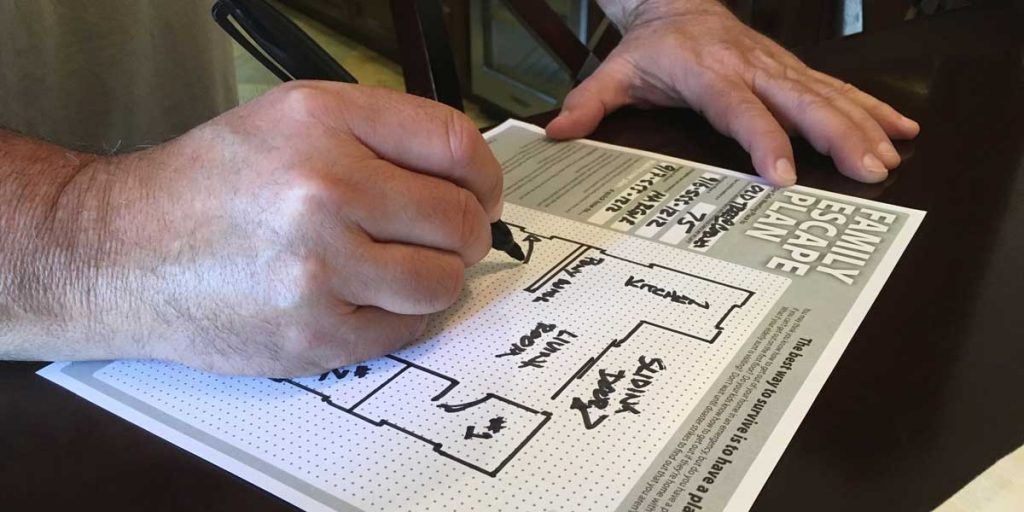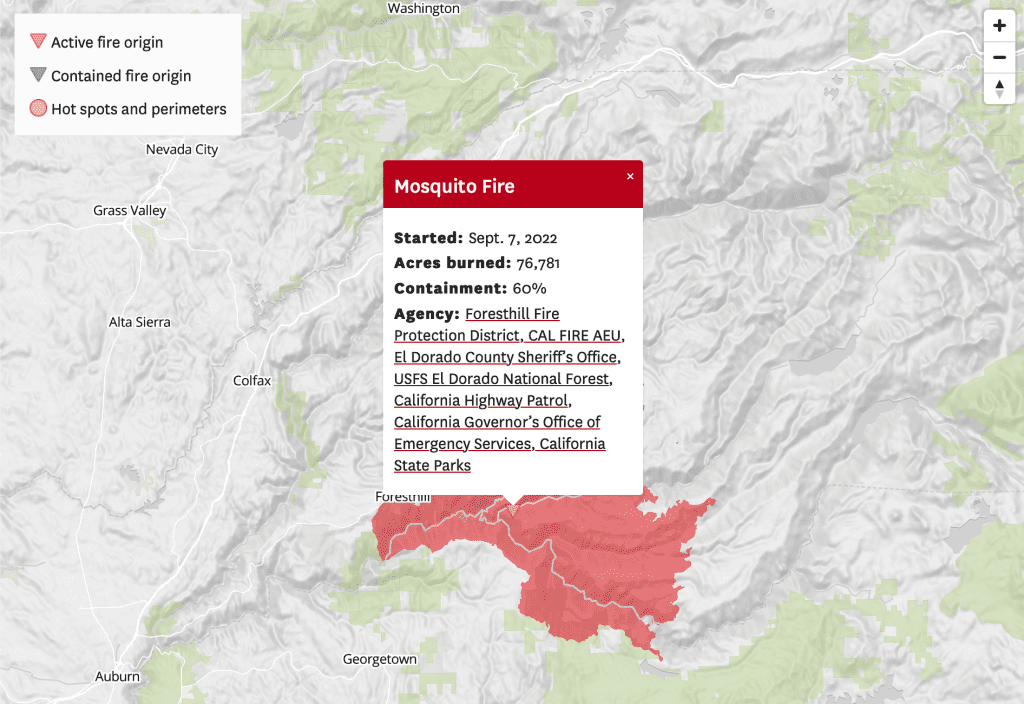Family Escape Plan
Creating A Plan is Easy
Make One with your Family Today!
Do you know how to escape from your home if it’s on fire? During a true emergency, the simplest of things, like leaving your home, can become very difficult. In today’s home made up of plastic and synthetics, you may only have two minutes to get out. That’s why creating a family escape plan is one of the most important things you can do. Spend a few minutes on this page and discover how easy it is to prepare before an emergency.
Creating A Plan is Easy
Start By Drawing a Map of Your Home
Download the PDF below (English and Spanish versions available) – and use it to draw a map of your home. Make sure you identify TWO WAYS OUT on your map, then follow these 10 easy escape plan tips.

10 Great Planning Tips
The first step in escaping a fire is to know there is a fire. That’s what a smoke alarm will do for you. Make sure to change the batteries in your smoke detectors twice a year when you change the clocks – Spring Ahead, Fall Back.
Doors make great fire barriers! It takes fire 10 – 15 minutes to burn through a wooden door. Those 10 – 15 minutes could save your life. So make sure bedroom doors are closed while people are sleeping.
Everyone in your house should visit each bedroom and figure out two escape routes from that room.
1. The normal exit
2. The other exit through a door or a window
Make a map of your home. Download this PDF – the family escape plan grid to begin. Plan your escape route with TWO WAYS OUT. Learn how to open windows (especially ones with bars on them). Make sure everyone in your family knows your escape routes.
Most high-rise or multi-story apartment complexes post fire escape plans for all residents to see and follow. However, these plans seldom include escape routes for each apartment. Family members must develop and practice an evacuation plan for their individual apartment.
People who die or are injured in house fires are usually not burned. They’re hurt by the smoke a fire creates. Smoke and heat rise when a fire burns, so the best place to find fresher, cooler air is near the floor. When a person is caught in a building filled with smoke, they should drop on hands and knees and crawl to the nearest exit.
Test all closed doors before opening them. Put the back of your hand near the crack of a closed door. If you feel heat, DON’T OPEN IT. This is your fire break. Use your second way out to escape. If the door is not hot, open it slowly but be prepared to close it again if you see flames or heavy smoke.
A special meeting place should be established a safe distance from the house. It could be a mailbox, the neighbor’s driveway, a street sign on the corner, or a building across the street. Whatever it is, it must be something that is stationary and won’t be moved (such as a car). This is where everyone meets in the event of a fire. It also prevents family members from wandering around the neighborhood looking for one another, or worse, being tempted to re-enter the burning house for someone thought to be trapped inside.
Choose your safe meeting place TODAY. Make sure everyone in your home knows it.
Once your plan is made, it’s time to practice. Do this often. At different times during the day, especially at night, when house fires are far more likely.
Position each family member in his or her bed, turn all the lights off, and activate the smoke detector by depressing the test switch. Each family member should help “awaken” the others by yelling the alert. Family members should exit their rooms according to the plan, crawl low under smoke, practice feeling doors for heat, and meet in the designated location outside the home.
Pets are a part of your family, so make sure you include them in your plan and in your practice sessions!
Once outside at the special meeting place, a person can be sent to the neighbor’s to call 9-1-1. If anyone is missing, give that information to the fire department immediately and tell them where the probable location of the missing person could be. Under no circumstances should anyone re-enter the burning building.
How To: Exit Safely From a Structure
Dangle
Jumping from upper floors of a building should be your last alternative. However, it is possible to hang from a second story window and drop feet first to the ground without significant injury. A sprained ankle or broken leg is better than staying in a burning building.
Ladders
Homeowners can purchase fire ladders for second-floor bedrooms, or instruct children to use an adjacent porch or garage roof to await rescue by the fire department.
No Elevators
When exiting such a multi-story structure, do not use the elevator. Elevators often stop working in the event of a fire, trapping people inside. The result can be deadly. A power failure may cause them to stop in between floors as well. Use the fire escape or an enclosed fire resistive stairwell to exit a high-rise building.
Explore!
As a family, explore the building you live in, so that every exit is familiar, including those from storage, laundry and recreation rooms. If the hallways become smoke-filled as the result of a fire, memory can help in finding the exits. Practicing emergency escape plans is crucial to helping you and your family remain calm and confident during an actual emergency.



